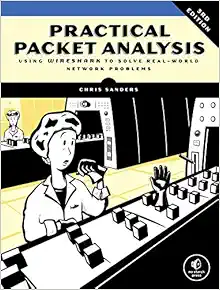
Practical Packet Analysis, 3rd Edition: Using Wireshark to Solve Real-World Network Problems
3rd Edition
Description
"A wealth of information. Smart, yet very readable, and honestly made me excited to read about packet analysis." --TechRepublic"I'd recommend this book to junior network analysts, software developers, and the newly minted CSE/CISSP/etc.--folks that just need to roll up their sleeves and get started troubleshooting network (and security) problems." --Gunter Ollmann, former Chief Technical Officer of IOActivexa0"The next time I investigate a slow network, I'll turn to Practical Packet Analysis. And that's perhaps the best praise I can offer on any technical book." --Michael W. Lucas, author of Absolute FreeBSD and Network Flow Analysisxa0"An essential book if you are responsible for network administration on any level." --Linux Pro Magazinexa0"A wonderful, simple-to-use, and well-laid-out guide." --ArsGeek.comxa0"If you need to get the basics of packet analysis down pat, this is a very good place to start." --StateofSecurity.comxa0"Very informative and held up to the key word in its title, practical. It does a great job of giving readers what they need to know to do packet analysis and then jumps right in with vivid real-life examples of what to do with Wireshark." --LinuxSecurity.comxa0"Are there unknown hosts chatting away with each other? Is my machine talking to strangers? You need a packet sniffer to really find the answers to these questions. Wireshark is one of the best tools to do this job, and this book is one of the best ways to learn about that tool." --Free Software Magazinexa0"Perfect for the beginner to intermediate." --Daemon News Chris Sanders is a computer security consultant, researcher, and educator. He is the author of Applied Network Security Monitoring and blogs regularly at ChrisSanders.org. Chris uses packet analysis daily to catch bad guys and find evil.
Features & Highlights
- It’s easy to capture packets with Wireshark, the world’s most popular network sniffer, whether off the wire or from the air. But how do you use those packets to understand what’s happening on your network?Updated to cover Wireshark 2.x, the third edition of
- Practical Packet Analysis
- will teach you to make sense of your packet captures so that you can better troubleshoot network problems. You’ll find added coverage of IPv6 and SMTP, a new chapter on the powerful command line packet analyzers tcpdump and TShark, and an appendix on how to read and reference packet values using a packet map.
- Practical Packet Analysis
- will show you how to:–Monitor your network in real time and tap live network communications–Build customized capture and display filters–Use packet analysis to troubleshoot and resolve common network problems, like loss of connectivity, DNS issues, and slow speeds–Explore modern exploits and malware at the packet level–Extract files sent across a network from packet captures–Graph traffic patterns to visualize the data flowing across your network–Use advanced Wireshark features to understand confusing captures–Build statistics and reports to help you better explain technical network information to non-techiesNo matter what your level of experience is,
- Practical Packet Analysis
- will show you how to use Wireshark to make sense of any network and get things done.





